I recall as a 16-year old and having taken up photography about a year earlier, seeing in the photographic press the arrival of the Canon 7 with a lens of the simply unheard of aperture for those days, a massive f0.95. However, thoughts of owning one one day were not on the table.
The Canon 7 is the first model of three forming the 7 series; it was followed by the 7S and 7SII, and which were to see out the glory days of precision interchangeable lens rangefinder cameras. Zeiss had already ceased production of its famed Contax models in 1960, which year also coincided with the last model in Nikon’s rangefinder range. Only Leica would continue production, unbroken to the present day. But despite the onslaught of the slr, the Canon 7 still sold around 100,000 units.
It is well made and, as befitting Japanese camera technology of the time, happened to be more advanced overall than the then current Leica offerings. I believe it was clear that Canon had Leica in its sights and from even a cursory glance one can see that there is much similarity.
The major difference is the built-in selenium meter and which is coupled to the shutter dial, but upon closer inspection, one will notice the rewind crank, the lack of an accessory shoe and no frame selector lever on the front left of the lens mount.
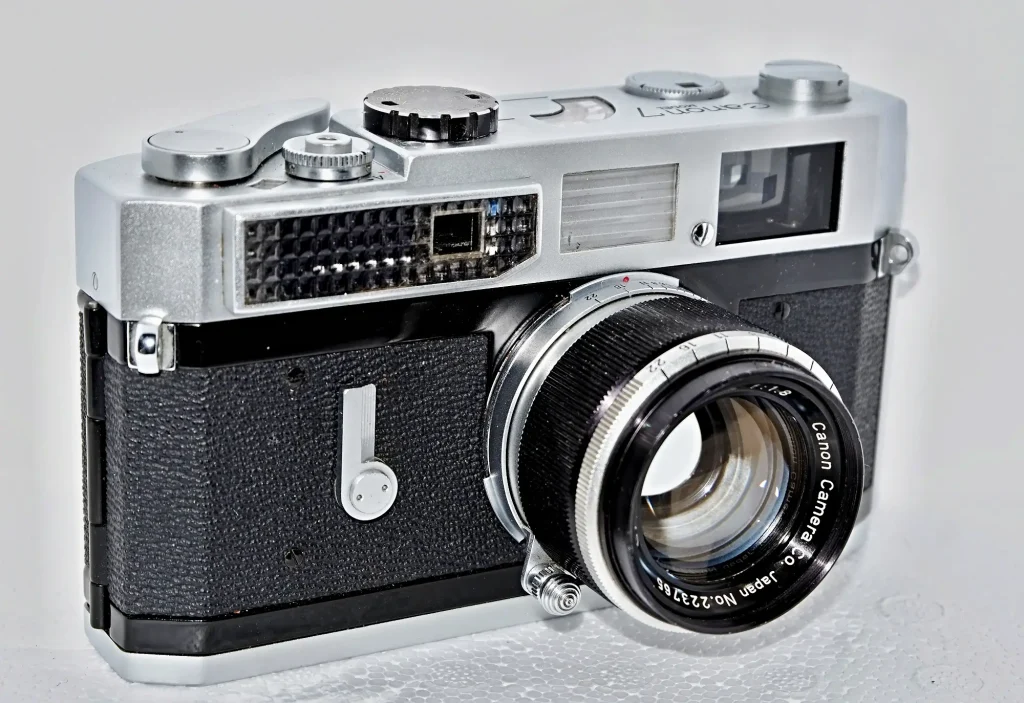
It is the lack of the shoe that today’s users will likely find the most vexing. Unaided, the 7 can’t mount an external flash unit, or anything else you may want to attach, such as an optical finder for lenses wider than 35mm. On-camera flash is possible, but only with a bespoke flash coupler that attaches via a special bayonet on the top left side of the body. Today, these couplers are very hard to find and were it not for on-line auction sites the chances are you’d never come across one. They have a cold shoe which is par for the course in those days.
Viewing the top plate one sees certain features that differentiate it from an M3/M2: a rewind crank, manual selector for lens frames, the exposure meter occupying the space where one would expect to have an accessory shoe, a large shutter dial with in-built film speed setting, a shutter release lock around the shutter release, and a small film advance confirmation window. As per the Leica M3, the frame counter auto resets and, it too, is numbered to 40. To the right of the viewfinder eyepiece there is the meter switch for high/low sensitivity, and to the right of this is a little button to unlock the shutter speed dial for inputting the film ISO speed.
The back is hinged and has a double lock to prevent accidental opening. First the key in the base plate is turned and then the back release at the side and bottom is pulled down to release the back.
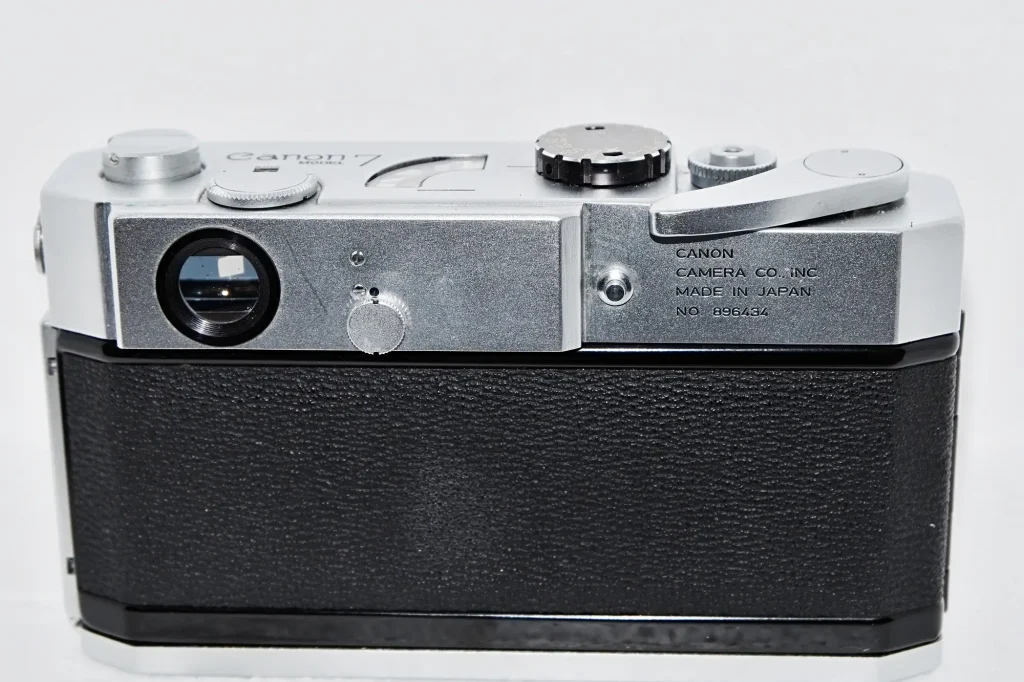
Before Using The 7
Setting the film speed for the meter requires the small black button on the right rear to be depressed. This releases the lock on the shutter speed dial which can now be lifted and turned to the required film speed setting, viewed within the dial, and then the black button is released to lock the setting. When taking a reading, it is then simply a matter of aligning a chosen aperture against the meter needle by turning the shutter speed dial. This aperture needs, of course, to be set manually on the lens, but the meter alignment also sets the corresponding shutter speed. It works just like a Leica Meter MC, although I’d give the nod to the Leica MC meter for its ease of reading the scale.
Film loading is conventional but opening the hinged back reveals the big surprise – the shutter curtains are all metal and not rubberised cloth. And not metal slats as per the original Contax rangefinders, nor the bladed shutters as found with modern shutters. No, these are extremely thin all metal shutter curtains. They don’t perish nor are they susceptible to having pinprick holes burned into them by the sun. Apparently, they can take quite some abuse and still operate normally. It is not uncommon today to find fully working Canon 7’s with damaged curtains.
As the 7 is a screw body, it doesn’t have the facility to change frames automatically when a lens is attached, as on a Leica M. Instead the lens focal length is set using the dial on the top plate. Conveniently, this covers focal lengths from 35mm to 135mm in the following sequence: 35, 50, 85/90, and 135. Only the 85/90 frames are doubled up, making the wide focal length range far less messy than an M6, say, and obviating the need for an M3 and M2 to cover the same range unaided. A really nice touch is that the chosen focal length is also indicated within the bright lines themselves as a constant reminder. As with Leica M’s the frames are auto parallax corrected.
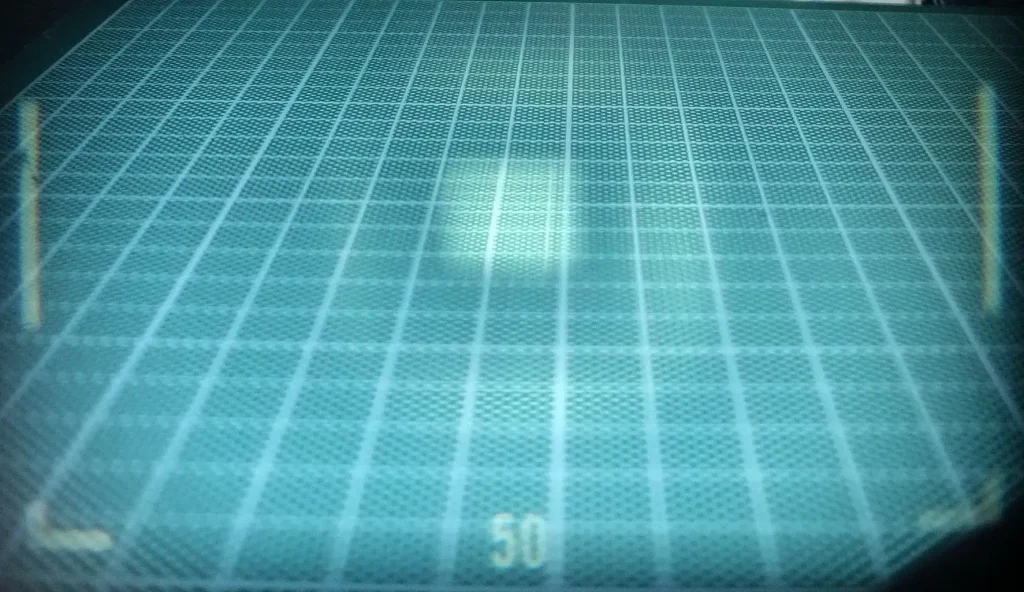
The Model 7 in use
I don’t find the Canon 7 quite as comfortable in the hand as my M3/M6 cameras as these have the rounded ends that make holding any M Leica or earlier series L39 models so comfortable. The 7 is marginally bigger, but I don’t find this to be a disadvantage, despite my small hands. The Canon 7 handles very much like an M2/3/4 with their meters attached but then the cameras fall down when one wishes to use lenses wider than their v/f is designed for, or when on-camera flash is needed. (The exception is the M3 for which spectacled versions of the 35mm Summaron can be fitted.) The finder is a joy, being large and crystal clear, with a well delineated rangefinder spot.
With their meters attached the M2/3/4 tie up their accessory shoe; the Canon 7 simply doesn’t have one! Flash brackets can be used but are somewhat impractical for use with accessory W/A viewfinders. Instead, with the 7, Canon did provide a proprietary flash coupler.
Lenses from 35 to 135mm, pose no real problems, but lenses wider than 35, and which require a separate optical finder, can be somewhat problematic owing to the absence of the accessory shoe. It seems obvious to us today how useful these are, but this was the penalty for having the built-in meter.
A nice little feature is the film advance confirmation which is indicated by the red dot in the small window to the left of the film advance crank. As this is attached to the sprocket shaft it is in fact doubly useful, more so in fact, when rewinding a film as it will stop rotating once the film leader has been pulled past the sprockets and the cassette can be removed with the leader showing. A very useful feature for photographers who develop their own film or need to change films mid-roll.
My Canon 7 wasn’t really acquired to be used, but out of a desire to own one and put it in my camera collection. In fact, I only used it on two occasions, both using the excellent Voigtlander (Cosina) lenses. I did a walk-around in Birmingham City centre one Sunday with the Voigtlander f4.5/15 Heliar with the optical v/f taped precariously to the top of the camera, and later on a holiday to Normandy and Brittany with the f1.7/35 Ultron and f1.5/50 Nokton.
Lens Choice
Having an L39 mount, means choice is limited to the older Leica screw lenses as Leica’s newer computations are M mount only, or L39 lenses designed specifically for Leica L39 mount, such as those from Canon or other period lenses, such as the Topcors for the Leotax.
Fortunately, more modern lenses do exist in L39 mount, courtesy of Voigtlander/Cosina, and these are truly excellent. The 15mm is very sharp over most of the frame used around f8 to f11, but does need precise handling as it can exhibit wide angle perspective distortions that are inevitable for such an extreme FoV. Sometimes the effect can be amusing, such as in the shot of the tour bus where the street lamp seems to be leaning precariously. The Heliar is much less prone to flare than I would have anticipated.
The f1.7/35 Ultron, is another admirable performer when used sensibly i.e. stopped down so it can give of its best performance when, in good lighting, images are very sharp and crisp with excellent contrast. But for me, the star of these early releases is the f1.5/50 Nokton. It too, provides all the sharpness and contrast I can use, and stands up well in low light. I’d prefer focusing rings with more grip on the 35 and 50, but my 50 is better than the 35 in respect of its being larger and with easier, silkier, focusing. The Canon f1.8/50 was added a couple of years ago purely as it is contemporaneous with the body.
Regarding the images, the negatives have been scanned at the maximum resolution of 2820dpi on my Minolta Dimage Scan Elite II film scanner. For ease of reference I’ve added text for which lens was used.
Summary
So, today, the Canon 7 is still eminently usable and has the advantage of being far less expensive than a Leica M body, even in excellent fully working order and with an f1.8/50 lens. Some damage to the metal shutter curtains, provided it is not too excessive, will not impact on the shutter. If a working meter is important, then inevitably these cameras command more, but a non-working meter doesn’t otherwise prevent the camera from being used.
Share this post:
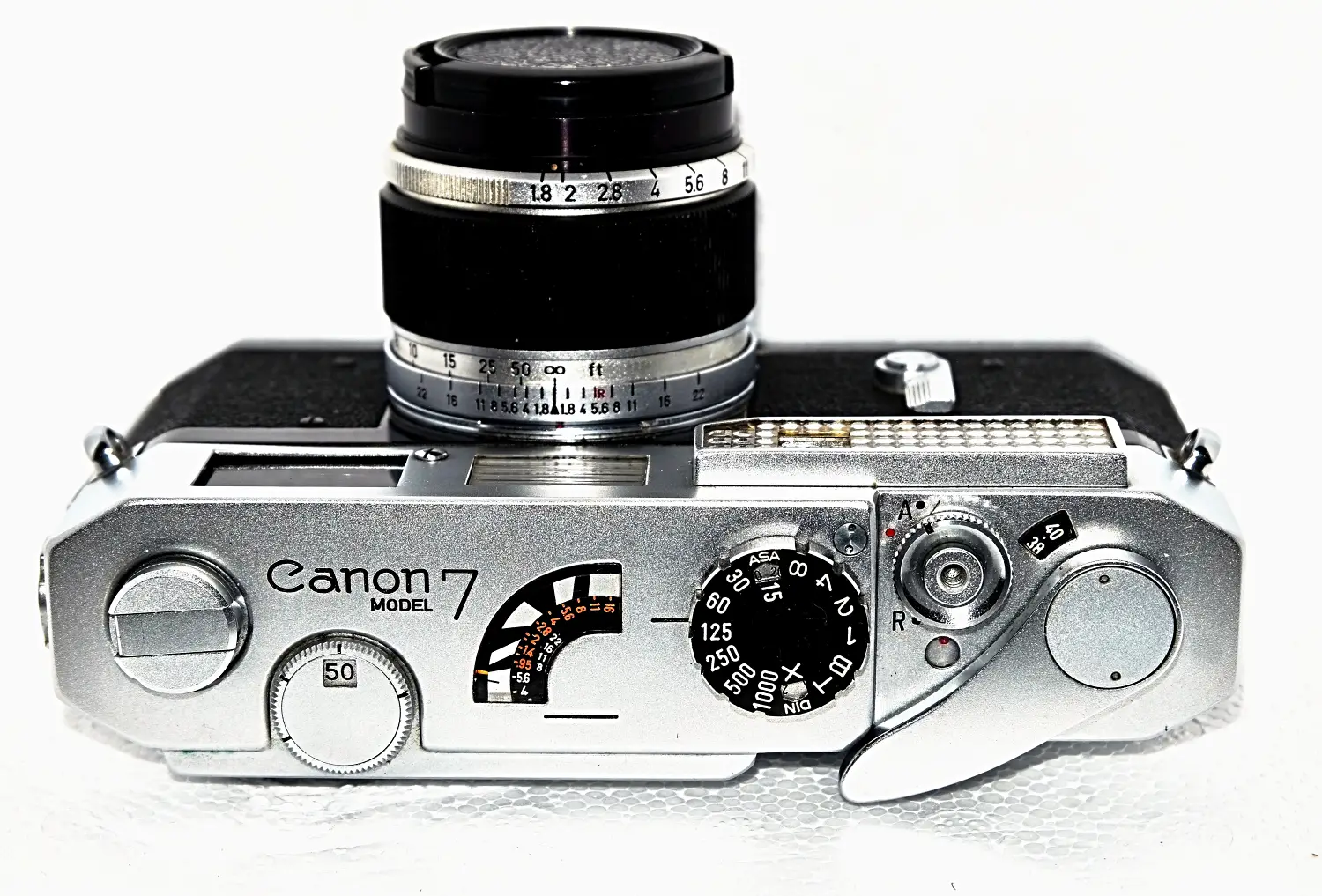


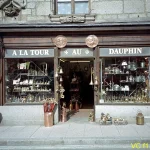
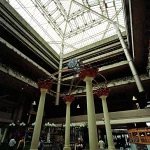
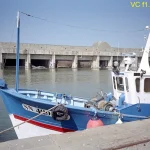
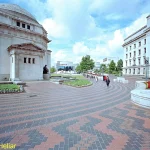



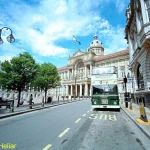









Comments
Kodachromeguy on Canon 7 Review – by Terry B.
Comment posted: 18/03/2018
Comment posted: 18/03/2018
Comment posted: 18/03/2018
Comment posted: 18/03/2018
Karl Valentin on Canon 7 Review – by Terry B.
Comment posted: 19/03/2018
Comment posted: 19/03/2018
Dan Castelli on Canon 7 Review – by Terry B.
Comment posted: 19/03/2018
When was your camera actually made?
Comment posted: 19/03/2018
Picturenaut on Canon 7 Review – by Terry B.
Comment posted: 04/06/2018
For those considering such a M39 screw mount body I can highy recommend Canon's impressively sharp 35mm f/2 and Canon's 50mm f/1.4 as a standard lens. The latter is a bit faster than the also nice f/1.8 (I have one, too) but it still is light, compact, sharp and delivers wide open a nice bokeh. If you are a bit crazy, get also Canon's 100mm f/2 RF lens. I use one quite frequently in the street, and it works! The Canon 7's rangefinder is good enough to control it even wide open
Comment posted: 04/06/2018
Comment posted: 04/06/2018
Comment posted: 04/06/2018
David on Canon 7 Review – by Terry B.
Comment posted: 27/06/2018
The meter most of the time does not function and having a Gossen pilot or the like helps. But in terms of durability it will last longer than you and me. The best lens combo is the canon 35 f2 and 50 f1.8. If you are lucky and can get a Canon 19 f3.5 you can get really wide-angle shots. Unfortunately they are expensive and rare.
Comment posted: 27/06/2018
Comment posted: 27/06/2018
A Journey To Find “My” Camera - The Canon Model 7 - By Gavin Bain - 35mmc on Canon 7 Review – by Terry B.
Comment posted: 05/11/2019
Nigel Haycock on Canon 7 Review – by Terry B.
Comment posted: 10/01/2020
5 Frames with the Mamiya 6 and the 75mm f3.5 - by Aloysius Chow - 35mmc on Canon 7 Review – by Terry B.
Comment posted: 19/05/2020
rl1856 on Canon 7 Review – by Terry B.
Comment posted: 01/12/2020
before_long on Canon 7 Review – by Terry B.
Comment posted: 28/03/2024